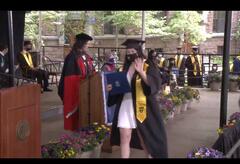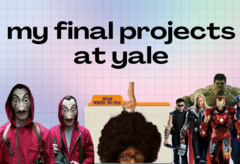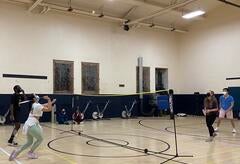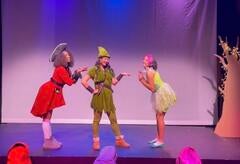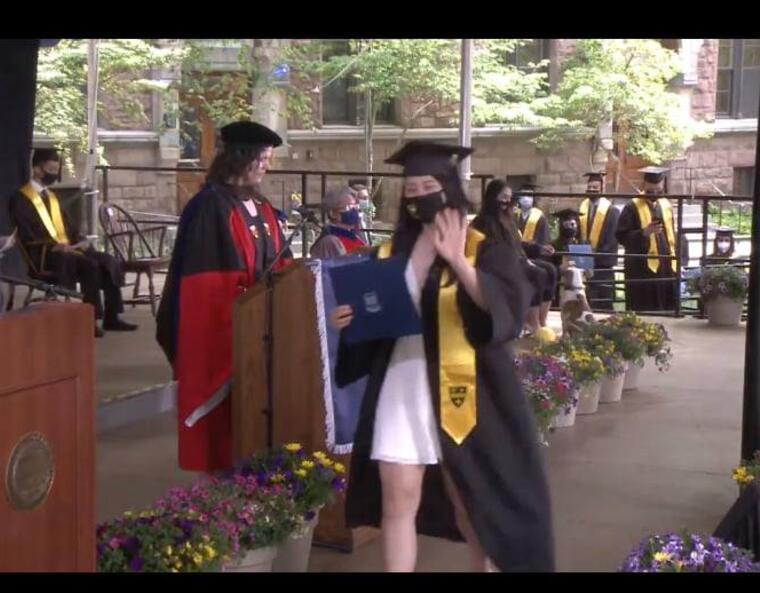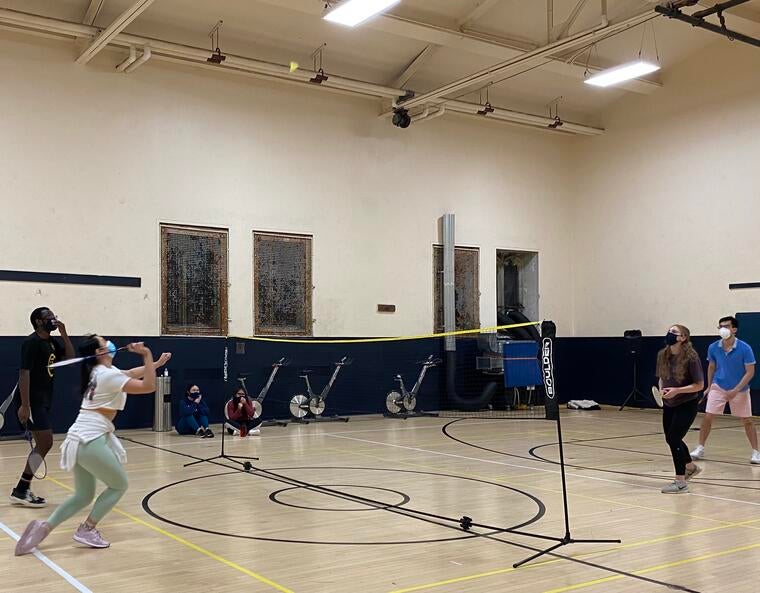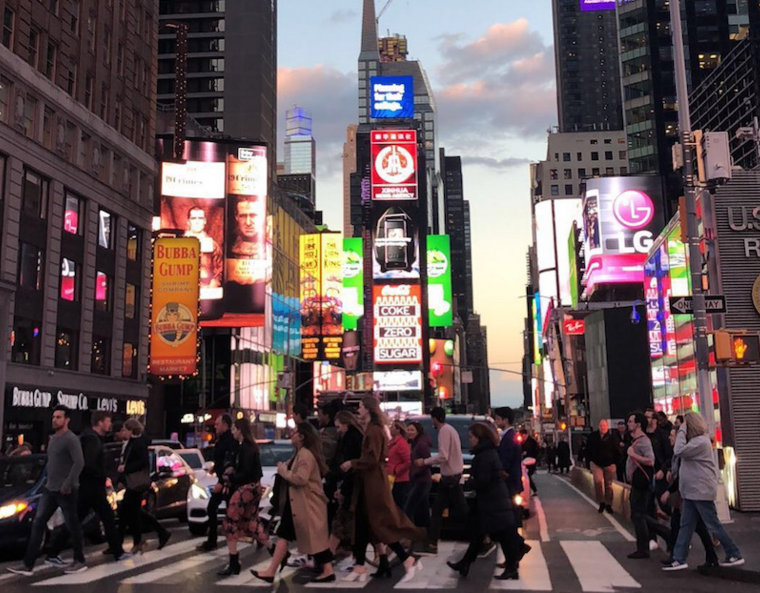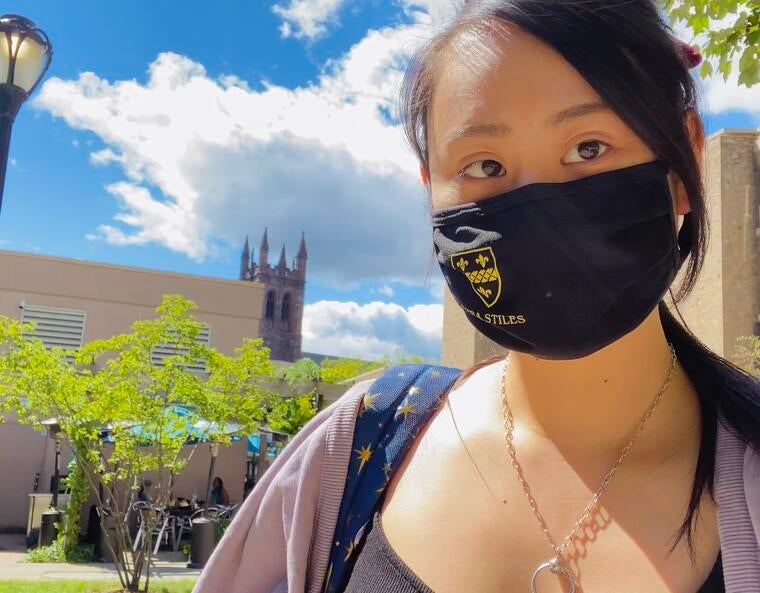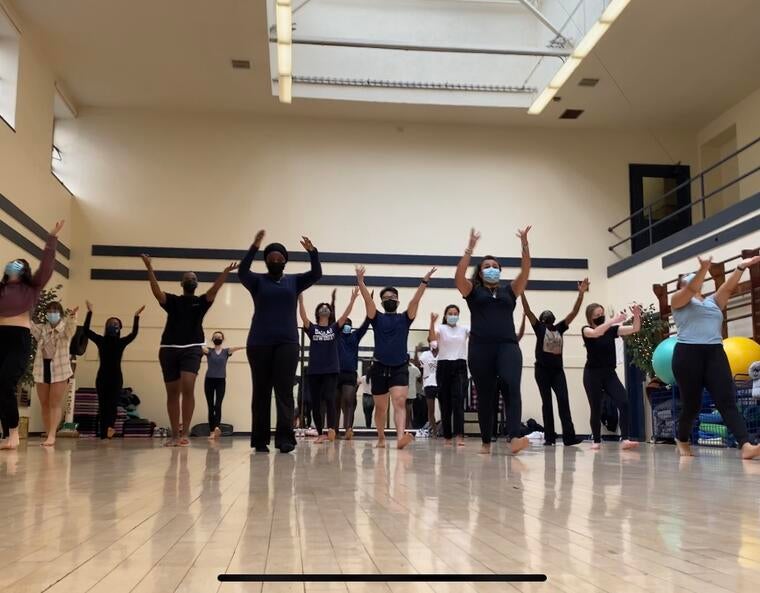
On my first day of West African Dance class, all we did was walk.
Our first class took place outside on the grassy Crescent Courtyard, because our usual dance studio was still being refurbished. I arrived in workout clothes, ready to run and leap and dance with the brilliance of a billion suns. The energy was palpable—this highly sought after class was capped at 16 students, and we all felt extraordinarily lucky to be there. Professor Coulibaly led us in a series of standing warm-ups before telling us his secret: “I believe anyone can dance.”
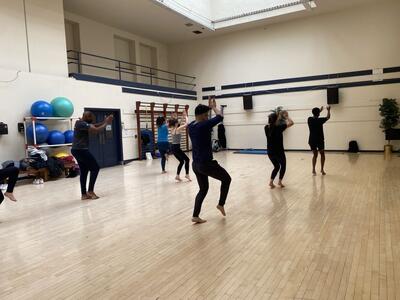
The ability to dance, he divulged, is not contingent on body shape, flexibility, or strength. Dance is simply about rhythm, and knowing how to carry one’s weight alongside the workings of gravity.
With those words of wisdom ringing in our ears, he gestured for us to form two concentric circles. We began to walk in different directions as he imitated drumming sounds and patterns with his mouth. It was a strange form of beatboxing that was more melodic than percussive. For a while, we simply walked. Then he introduced a backwards step that came precisely timed after three forward steps. Over the course of that first class, he introduced small changes to our rhythm and eventually performed the whole step in sequence, adding numerous little flourishes to the bare bones choreography, making walking look like, well, dancing.
I didn’t know it then, but what he was doing in that first class would lay the foundation for the rest of my semester. Twice a week, I found myself at the dance studio, seemingly relearning how to walk, how to let gravity dictate my movements. It was a drastically different way of learning than other genres of dance; I learned that West African dance emphasizes the natural positions of the body (staying closer to the ground, allowing gravity to pull limbs down) rather than more Western styles of dance that strive for the unnatural (pointe technique in ballet, leaps and jumps, holding the body extremely upright).

Learning how to listen to West African music too was a new experience; unlike Western music, with a rigid beat, West African music emphasizes a constant ebb and flow of polyrhythmic harmonies. There was a particular rhythm that signified our cue to start dancing; we spent the first couple of weeks trying our best to identify the cue amongst the multiple different drumming patterns. Though it was frustrating at first, eventually we got the hang of it.
Over the course of the semester, Professor Coulibaly has taught us four different traditional dances stemming from Burkina Faso traditions. We also spent time learning how to improvise, which, quite frankly, our class was very reluctant to do. We protested when he suggested we break up into groups and dance, without music, in front of everyone else. I was especially nervous to do this, but he pulled me aside and explained that the reason I was so afraid was because I feared judgment—I judged myself, and feared others would judge my dance. He told me to dance just for myself.
I took a breath, closed my eyes, and began to move.
As I explored the different ways my body could cut through air, as I focused on my breathing and the internal rhythm of a simple 1-2-3-4, I started to enjoy myself. The silence wasn’t as deafening as I thought it would be; I was able to fill my head with my own melodies. I stopped thinking about my next steps and started dancing, whatever felt right for that moment. It was liberating and glorious—I’ve never quite “danced like nobody’s watching” in front of a room full of people.
I step into the studio with gratitude: not only do I get to learn about West African culture, but I also get to embody these meaningful dances. I’m proud of the progress I’ve made: from literal baby steps of walking to now taking creative ownership of dance through improvisation.
